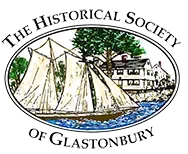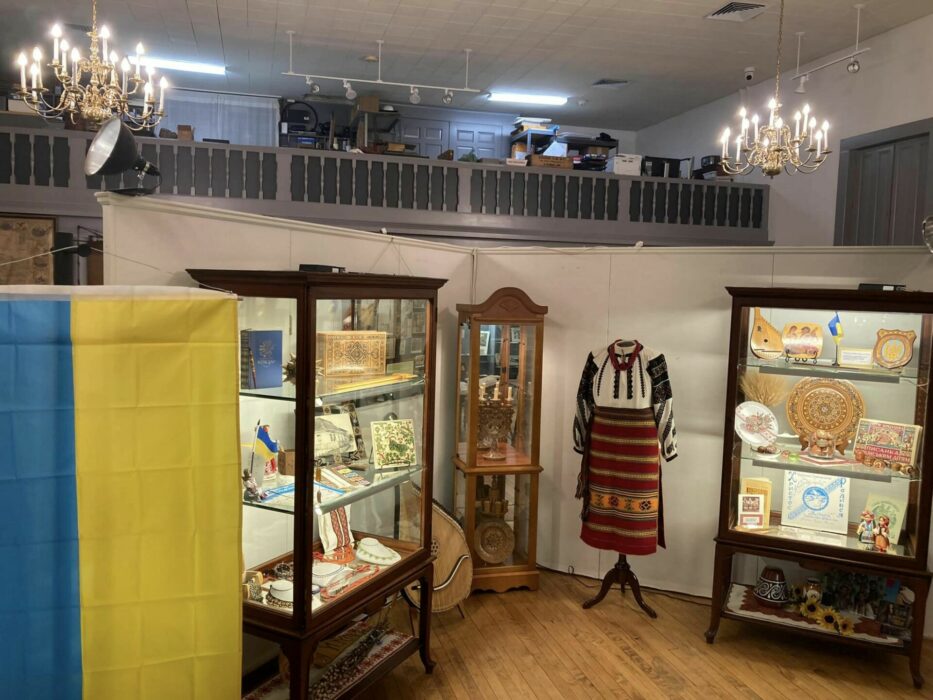by Stephen Bartkus, Curator
The Historical Society of Glastonbury is pleased to announce its latest community-curated exhibit, which showcases the cultural traditions and heritage of Glastonbury’s Ukrainian community. The grand opening will be tonight, April 20, 2023, from 5-7 pm at the Museum on the Green at 1944 Main Street. Admission is free, and light refreshments will be served. Many colorful Ukrainian artistic and cultural objects will be on display, including dozens of pysanky (exquisitely decorated eggs), textiles, jewelry, wood carvings, pottery, and more. The Historical Society would like to acknowledge and thank Bohdan Pokora of Glastonbury for providing much of the information contained in this article.
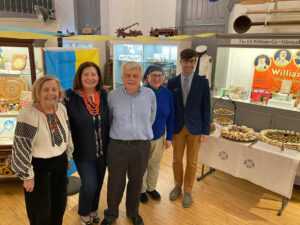 There have been four primary waves of Ukrainian immigration to the United States. The majority of Glastonbury’s first Ukrainian settlers arrived following World War I and found work in agriculture or as factory laborers, especially at the Williams Brothers Silver Factory in the Curtisville part of town, where the majority of them also found housing. John and Lena (Nowakowska) Sydorak lived at 103 Orchard Street from 1925 to 1952, and John worked at Roser’s Tannery. Mary (Dudich) Hasychak Lezuka Kohut and her children moved to 97 Orchard Street to work tobacco and sold vegetables, chickens, and eggs after her husband, Joseph Hasychak, was murdered and her shanty in Slickville, PA, was destroyed by fire.
There have been four primary waves of Ukrainian immigration to the United States. The majority of Glastonbury’s first Ukrainian settlers arrived following World War I and found work in agriculture or as factory laborers, especially at the Williams Brothers Silver Factory in the Curtisville part of town, where the majority of them also found housing. John and Lena (Nowakowska) Sydorak lived at 103 Orchard Street from 1925 to 1952, and John worked at Roser’s Tannery. Mary (Dudich) Hasychak Lezuka Kohut and her children moved to 97 Orchard Street to work tobacco and sold vegetables, chickens, and eggs after her husband, Joseph Hasychak, was murdered and her shanty in Slickville, PA, was destroyed by fire.
To foster a sense of community in their new homeland, in 1925, twenty Ukrainian families, led by Father Michael Kuziw, organized a church parish and purchased the small, wood-frame church on New London Turnpike that had been built in 1902 by the German Lutheran community for $4,200. They renamed it in honor of St. John the Baptist. Given the relatively small number of parishioners, St. John the Baptist became a mission church served by the pastor of St. Michael’s Ukrainian Church in Hartford. The longest-serving pastor-administrator, from 1938 to 1980, was Monsignor Stephen Balandiuk. Since 2002 the church has been administered by the pastor of St. Mary’s Holy Dormition Church in Colchester. The parish is now 98 years old and holds regular Sunday services.
The church cemetery, located on New London Turnpike between Conestoga Way and East Carriage Drive, was purchased for $300 on May 11, 1927, and blessed by Rev. A. Prystay on July 28, 1928. The cemetery’s north side is owned by St. John the Baptist, and the south side by St. Michael’s. Michael Sawka was given an eight-plot lot in the cemetery, where he and his family are buried, for the balance due on the work he did leveling the bank and constructing the stone gate posts at the entrance.
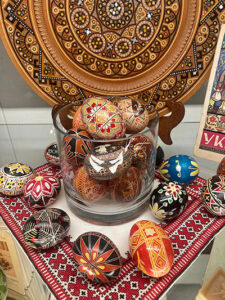 The first wave of Ukrainians here in Glastonbury assimilated into American life, including serving in the military in World War II. Michael Kohut died as a parachuter. The former local VFW post, Pfau-Smyk 7659, was named in partial honor of Ukrainian John Smyk, the son of a tobacco farmer, who was killed in action in Czechoslovakia in May of 1945.
The first wave of Ukrainians here in Glastonbury assimilated into American life, including serving in the military in World War II. Michael Kohut died as a parachuter. The former local VFW post, Pfau-Smyk 7659, was named in partial honor of Ukrainian John Smyk, the son of a tobacco farmer, who was killed in action in Czechoslovakia in May of 1945.
The second wave of Ukrainian immigrants arrived in the aftermath of World War II. These were people displaced by the war who did not wish to live under Soviet Communism. This population settled primarily in urban areas, such as greater Hartford, where there were numerous manufacturing, insurance, and service jobs. Many people from this wave hoped to one day return to their native land. To this end, they created social structures to preserve their language and culture (churches, a national home, youth groups, a Saturday Ukrainian school, choirs, dance groups, and a credit union). Some of the children and grandchildren of this wave of immigrants still reside in Glastonbury today. Peter Oborski immigrated in 1951 with his wife, Evgenija, and their children, Helen, Katherine, and Steve, joining him in 1953.
Local chapters of two youth organizations were established during this time: the Ukrainian American Youth Association and Plast, the Ukrainian Scouting Organization. The purpose of both these organizations was to instill a sense of Ukrainian heritage, culture, and identity through weekly meetings, attending summer camps, and other group activities. These organizations continue to exist.
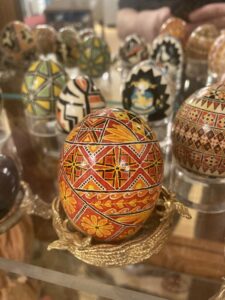 During the height of urban renewal in the 1960s, the Glastonbury Redevelopment Authority seized by eminent domain both the land and building of St. John the Baptist Church and many homes on the original Grove Street (now New London Turnpike), for a new road linking Main Street and New London Turnpike and the new large commercial-residential development of David MacClain and Daniel Kancler. At the urging of the Glastonbury Heritage Committee and the Historical Society, the church was saved from demolition and moved to its present location at 26 New London Turnpike in 1974.
During the height of urban renewal in the 1960s, the Glastonbury Redevelopment Authority seized by eminent domain both the land and building of St. John the Baptist Church and many homes on the original Grove Street (now New London Turnpike), for a new road linking Main Street and New London Turnpike and the new large commercial-residential development of David MacClain and Daniel Kancler. At the urging of the Glastonbury Heritage Committee and the Historical Society, the church was saved from demolition and moved to its present location at 26 New London Turnpike in 1974.
The third wave of Ukrainian immigration occurred in the 1990s after the collapse of the Soviet Union. At that time, Ukraine became an independent nation, but the transition to a market-based economy proved disruptive to many. The people who arrived in this wave wanted to improve their economic lot. They continued to maintain ties with family members in Ukraine. This population was welcomed into the social organizations developed by post-World War II immigrants. They also founded a social group known as the Krayani (Ukrainian for “countrymen”’) to serve their group’s specific needs. Members of this immigration wave reside in the suburbs of Hartford, including Glastonbury.
The latest exodus started in 2022 with the outbreak of Russia’s brutal war with Ukraine as refugees fled their country in search of safety. Glastonbury continues to welcome all those seeking a new home in America.
The Ukrainian community exhibit will be on display during regular museum hours: 10 am-4 pm on Mondays, Tuesdays, and Thursdays through October. Admission is free.
